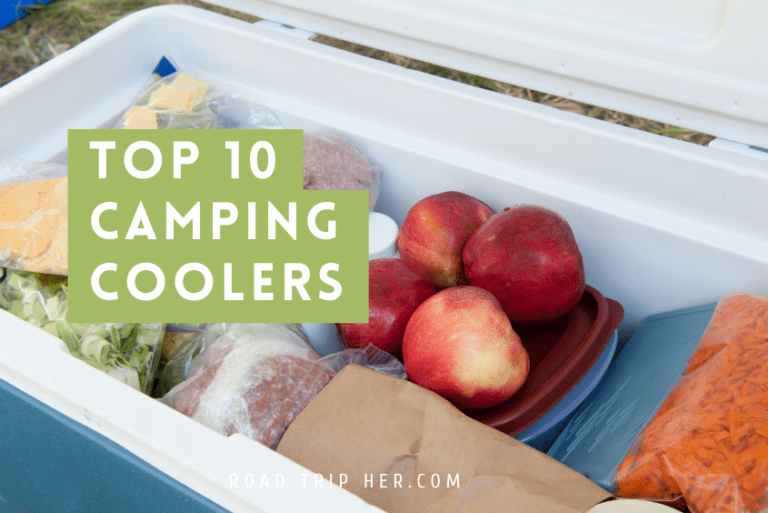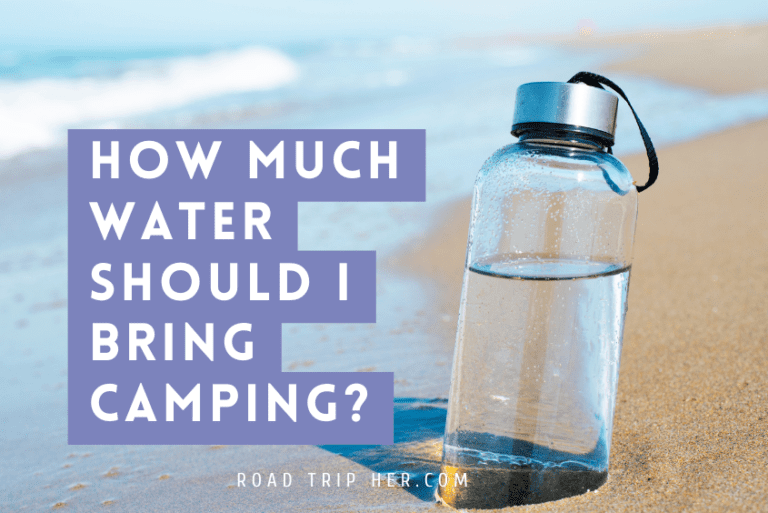How To Keep Food Cold While Camping
No one wants their perishable foods to spoil and become a breeding ground for germs. That’s why keeping food cold during your camping adventure is of utmost importance.
In this blog, I will share some essential guidelines, key principles, and advanced cooler techniques to help you keep your food cold and safe while enjoying the great outdoors. So, let’s dive in and explore the best strategies for preserving your food’s freshness and flavor on your next camping trip.
Contents
Essential Guidelines for Food Preservation While Camping
When it comes to outdoor activities, including camping, it’s crucial to prioritize food safety. Properly storing perishable foods is a good idea to prevent foodborne illnesses and to ensure the longevity of your food items.
Always follow a few essential guidelines for food preservation, especially when it comes to perishable items. By adhering to these guidelines, you can vastly improve the safety and quality of the food you consume while camping.
Why Keeping Food Cold is Vital
Keeping your food cold while camping is vital for several reasons, with food safety being the top priority. Cold temperatures inhibit the growth of harmful bacteria, which can cause foodborne illnesses.
By maintaining cold conditions, you can effectively prevent the multiplication of germs and ensure the freshness of your food items. Whether you’re storing raw meat, dairy products, or other perishables, refrigeration plays an essential role in food safety.
Key Principles of Food Storage in the Wild
When it comes to storing food items in the wild, there are a few key principles to keep in mind. Firstly, it’s crucial to protect perishable foods from warm air and direct sunlight, as these factors can accelerate spoilage. I always store my food away from hotspots, ensuring it is shielded from direct sun exposure.
Secondly, separate coolers for food and drinks are highly recommended. This separation helps maintain cold air circulation more effectively, as the cooler opening frequency is often different between food and beverages. Lastly, strategic storage of food items inside the cooler is essential. I make sure perishable foods are stored at the bottom, closest to the cooling source, to benefit from the distribution of cold air.
Choosing the Right Equipment for Food Storage
Choosing the right equipment for food storage is crucial for a successful camping trip. Among the various options available, investing in a high-quality cooler is the way to go. A well-insulated cooler will maintain the cold temperatures necessary for food preservation.
Evaluating Quality Coolers for Camping
When it comes to quality coolers, the Yeti Tundra series often comes to mind. These coolers are known for their exceptional performance and durability. With thicker walls and better insulation, the Yeti Tundra coolers can keep your food cold throughout the entire camping trip. When evaluating coolers, it’s important to prioritize insulation, as it plays a significant role in maintaining the desired temperature inside the cooler. By choosing a cooler with better insulation, you can trust that your food will remain cool and safe, even in warmer climates. So, if you’re looking for the best cooler option, consider the Yeti Tundra series for its superior insulation properties.
Pros and Cons of Powered Coolers
In addition to traditional coolers, powered coolers, such as electric coolers, are becoming increasingly popular for camping trips, especially for those who have access to electricity, such as RV campers.
Electric coolers offer the convenience of maintaining cold temperatures without the need for ice. They are a great option for longer camping trips or when ice resupply is limited.
However, it’s important to consider the availability of electricity and the potential reliance on propane or other fuel sources for power. But if you have the means, powered coolers can provide a hassle-free solution for keeping your food cold while camping.
Advanced Cooler Techniques for Extended Cooling
To take your food preservation game to the next level, advanced cooler techniques can be employed. These techniques include pre-chilling the cooler, strategic packing, and using thermometers to monitor cooler temperatures.
By incorporating these methods into your camping routine, you can extend the cooling efficiency of your cooler, ensuring your perishable foods stay cold and fresh throughout the entire trip. Let’s explore the benefits and best practices of these advanced cooler techniques.
Pre-Chilling Your Cooler: What and Why?
Pre-chilling the cooler is a good idea to optimize its cooling performance. Before packing perishable items, I always place the cooler in a cold environment, such as a freezer, to cool it down.
This pre-chilling process helps to maintain cold temperatures inside the cooler, as the cold air gets absorbed by the walls of the cooler. By starting with a cooler that is already cold, your food items will stay cold for longer, enhancing food safety and freshness during your camping adventure.
Strategic Packing: Making the Most Out of Your Cooler Space
Strategic packing of the cooler is vital to optimize the use of the available space, as well as to maximize the cooling efficiency. I always start by layering the bottom of the cooler with a thick layer of ice. This foundation provides a solid base for preserving the cold air.
Next, I arrange the perishable food items on top of the ice, making sure they are tightly packed. This arrangement allows the cold air to circulate around the food items, maintaining their freshness. Finally, I add another layer of ice on top to ensure even cooling throughout the cooler. By utilizing these strategic packing techniques, you can make the most out of your cooler space while keeping your food cold for an extended period.
Using Thermometers to Monitor Cooler Temperatures
Monitoring cooler temperatures is crucial for food safety, and the best way to do this is by using thermometers. I always place a thermometer inside the cooler to keep track of the temperature throughout the camping trip. This allows me to ensure that the cooler maintains the desired cold temperature, preventing the growth of harmful bacteria.
By regularly monitoring the cooler temperature, you can take appropriate actions, such as adding ice or adjusting the cooler’s insulation, to maintain the optimal cold environment for your food items.
Utilizing Ice and Ice Substitutes
Ice and ice substitutes play a crucial role in preserving food while camping. A solid layer of ice, whether in the form of ice packs, frozen bottles of water, or a bag of ice, helps maintain low temperatures within the cooler, preventing premature spoilage of perishable items.
As the ice melts, it creates a pool of water, which, when strategically managed, serves as an additional cooling agent. Utilizing ice effectively, especially when combined with efficient insulation and minimized exposure to hot air, is key to prolonging the freshness of food during camping trips.
Dry Ice vs Regular Ice: Which is Better for Camping?
When it comes to keeping food cold while camping, the choice between dry ice and regular ice is a common dilemma. While regular ice cubes tend to melt faster in direct sunlight, dry ice packs can last longer and create a layer of carbon dioxide that keeps food cold without water.
The Role of Ice Packs in Prolonging Cold Storage
When camping, using ice packs to keep food cold is a game-changer. I always opt for ice packs instead of loose ice to prevent any unwanted soggy mess. Placing them strategically on top of the cooler ensures that cold air is evenly distributed inside. This helps in maintaining a consistent temperature, keeping food fresh for a longer duration. By using ice packs at the bottom layer of the cooler, I ensure that my food items stay cold and preserved throughout the trip.
Food Preparation for Extended Cold Storage
When preparing for extended cold storage, pre-cook meals to reduce the need for a camping stove. Freeze food before the trip using bottles of water to fill any remaining space in the cooler. Layering the cooler with ice packs and bag of ice will ensure ample cooling.
Utilize dry ice carefully to prevent direct contact with food. Remember, as ice melts, it becomes a pool of water, so store perishable items in watertight containers. It’s essential to minimize hot air entering the cooler, so limit opening as much as possible.
Pre-Cooking Food for Camping Trips
During camping trips, I like to prepare some pre-cooked meals in advance. It’s a time-saver and allows me to focus on enjoying the great outdoors. These pre-cooked snacks are convenient, require minimal refrigeration, and free up more time for relaxation. Plus, using quart-sized freezer bags to store pre-cooked meals keeps everything organized and easy to manage, letting me fully embrace the camping experience without worrying about food preparation.
Freezing Food Prior to Your Journey: Benefits and Best Practices
Before setting off on a camping trip, I always freeze food items in a jug of cold water to keep them cold for the first day. I also pack perishables in the cooler’s thicker walls to maintain optimal temperatures.
Layering perishable foods with dry ice at the bottom of the cooler is my go-to method for prolonging their freshness. Freezing perishable foods in advance has been a game-changer in preventing spoilage during the trip. Additionally, using electric coolers with better insulation ensures that food stays cold for longer.
Optimizing Cooler Use During the Trip
When it comes to optimizing cooler use during your camping trip, a layer of ice at the bottom of the cooler can help maintain cold temperatures for longer. Additionally, strategically placing ice packs or bottles of water on top of the food can extend the cooling time as the ice melts.
It’s also important to minimize opening the cooler to prevent hot air from entering and to keep the cooler out of direct sunlight. These simple yet effective tactics can make a significant difference in preserving the freshness of your food while camping.
Protecting Your Cooler from Sun Exposure
When I’m out camping, I always make sure to find a shady spot for my cooler. It’s a simple trick, but it really makes a difference in keeping things cool. I also cover the cooler with a tarp to shield it from the direct sun. Placing the cooler on a damp towel helps maintain the temperature inside, especially when the weather gets hot.
Ensuring good air circulation around the cooler also prevents it from getting warmer. Another tip is to use a reflective blanket to protect the cooler from direct sunlight, which really helps maintain cooler temperatures.
Minimizing Cooler Opening: Why and How?
To minimize the need to open the cooler frequently while camping, strategic packing is essential. Consider using separate coolers for beverages and food items, or pack snacks in a separate cooler to avoid frequent opening of the main cooler. Planning meals in advance can also help reduce the frequency of opening the cooler.
Keeping Your Cooler Full for Maximum Efficiency
When it comes to keeping my cooler at its most efficient, I make sure to pack everything tightly. I fill any gaps with ice packs and layer them with food items to eliminate warm air pockets. By packing my cooler to the top with food and ice packs, I prevent warmer air from entering, maximizing cooling efficiency. It’s all about preventing warm air circulation and making the most out of every inch of space.
Conclusion
In conclusion, keeping your food cold while camping is crucial for maintaining its freshness and preventing foodborne illnesses. By following the essential guidelines for food preservation, choosing the right equipment, and implementing advanced cooler techniques, you can ensure that your food stays cold throughout your camping trip.







